A High Step-Up Partial Power Processing DC/DC T-Source Converter for UPS Application
Abstract
:1. Introduction
- Structures based on a high-frequency transformer and coupled inductors;
- Employing voltage lift techniques;
- Employing voltage multiplier circuits;
- Impedance source converters;
- Partial power converters (PPCs).
2. Operation Principles
3. Comparison of Full-Power TSC, Conventional PPTSC, and Improved PPTSC
- The relations for the current stresses of the switch for all structures are the same. Although the relations are the same, lower D leads to lower current stress in PPTSC structures.
- The current stress of D2 and D3 are lower for improved PPTSC. The reason is the same as the above description. Although the relations are the same, a lower D leads to lower current stress in PPTSC structures.
- Conduction losses of switches, transformer windings, and diodes.
- Turn-ON and turn-OFF switching losses of the switches.
4. Simulation and Experimental Result
5. Conclusions
Author Contributions
Funding
Conflicts of Interest
References
- Shahparasti, M.; Yazdian, A.; Mohamadian, M.; Larijani, A.S.S.; Fatemi, A. Parallel uninterruptible power supplies based on Z-source inverters. IET Power Electron. 2012, 5, 1359. [Google Scholar] [CrossRef]
- Lu, J.; Guerrero, J.M.; Savaghebi, M.; Ghias, A.M.Y.M.; Guan, Y.; Hou, X.; Vasquez, J.C. An Effective Solution for Regeneration Protection in Uninterruptible Power Supply. IEEE Trans. Ind. Appl. 2019, 55, 3055–3065. [Google Scholar] [CrossRef]
- Zhang, W.; Xu, D.; Li, X.; Xie, R.; Li, H.; Dong, D.; Sun, C.; Chen, M. Seamless transfer control strategy for fuel cell uninterruptible power supply system. IEEE Trans. Power Electron. 2013, 28, 717–729. [Google Scholar] [CrossRef]
- Lu, J.; Savaghebi, M.; Golestan, S.; Vasquez, J.C.; Guerrero, J.M.; Marzabal, A. Multimode Operation for On-Line Uninterruptible Power Supply System. IEEE J. Emerg. Sel. Top. Power Electron. 2019, 7, 1181–1196. [Google Scholar] [CrossRef] [Green Version]
- Li, W.; He, X. Review of nonisolated high-step-up DC/DC converters in photovoltaic grid-connected applications. IEEE Trans. Ind. Electron. 2011, 58, 1239–1250. [Google Scholar] [CrossRef]
- Silva, R.V.; Freitas, A.A.A.; Castro, M.R.; Antunes, F.L.M.; Sa, E.M. High gain QZS DC/DC converter with coupled inductor and capacitor switch. In Proceedings of the 2015 IEEE 13th Brazilian Power Electronics Conference and 1st Southern Power Electronics Conference (COBEP/SPEC), Fortaleza, Brazil, 29 November–2 December 2015; pp. 1–6. [Google Scholar]
- Xuewei, P.; Rathore, A.K. Novel Soft-Switching Snubberless Naturally Front-End-Converter-Based Bidirectional Inverter for. IEEE Trans. Ind. Appl. 2014, 50, 4132–4141. [Google Scholar] [CrossRef]
- Forouzesh, M.; Siwakoti, Y.P.; Gorji, S.A.; Blaabjerg, F.; Lehman, B. Step-Up DC-DC converters: A comprehensive review of voltage-boosting techniques, topologies, and applications. IEEE Trans. Power Electron. 2017, 32, 9143–9178. [Google Scholar] [CrossRef]
- Adamowicz, M. Non-isolated resonant quasi-Z-source network DC–DC converter. Electron. Lett. 2019, 55, 855–857. [Google Scholar] [CrossRef]
- Bajestan, M.M.; Shahparasti, M.; Khaburi, D.A. Application of trans Z-source inverter in photovoltaic systems. In Proceedings of the 2013 21st Iranian Conference on Electrical Engineering (ICEE), Mashhad, Iran, 14–16 May 2013; pp. 1–6. [Google Scholar]
- Shahparasti, M.; Rajaei, A.H.; Yazdian, A.; Mohamadian, M. Interline unified power quality conditioner based on single stage nine switch inverter. In Proceedings of the 2012 3rd Power Electronics and Drive Systems Technology (PEDSTC), Tehran, Iran, 15–16 February 2012; pp. 319–323. [Google Scholar]
- Shahparasti, M. Distributed Generation Inverter: New control Strategies to Supply Local Load with Standard Voltage under Distorted Grid Voltage. J. Energy Manag. Technol. 2019, 3, 1–10. [Google Scholar] [CrossRef]
- Lopez-Santos, O.; Garcia, G.; Martinez-Salamero, L.; Giral, R.; Vidal-Idiarte, E.; Merchan-Riveros, M.C.; Moreno-Guzman, Y. Analysis, design, and implementation of a static conductance-based MPPT method. IEEE Trans. Power Electron. 2019, 34, 1960–1979. [Google Scholar] [CrossRef]
- Shahparasti, M.; Sadeghi Larijani, A.; Fatemi, A.; Yazdian Varjani, A.; Mohammadian, M. Quasi Z-source inverter for photovoltaic system connected to single phase AC grid. In Proceedings of the 2010 1st Power Electronic & Drive Systems & Technologies Conference (PEDSTC), Tehran, Iran, 17–18 February 2010; pp. 456–460. [Google Scholar]
- Siwakoti, Y.P.; Blaabjerg, F.; Loh, P.C. Quasi-Y-source inverter. In Proceedings of the 2015 Australasian Universities Power Engineering Conference (AUPEC), Wollongong, Australia, 27–30 September 2015; Volume 1, pp. 1–5. [Google Scholar]
- Sajadian, S.; Ahmadi, R.; Zargarzadeh, H. Extremum Seeking-Based Model Predictive MPPT for Grid-Tied Z-Source Inverter for Photovoltaic Systems. IEEE J. Emerg. Sel. Top. Power Electron. 2019, 7, 216–227. [Google Scholar] [CrossRef]
- Siwakoti, Y.P.; Peng, F.Z.; Blaabjerg, F.; Loh, P.C.; Town, G.E.; Yang, S. Impedance-source networks for electric power conversion part II: Review of control and modulation techniques. IEEE Trans. Power Electron. 2015, 30, 1887–1906. [Google Scholar] [CrossRef]
- Siwakoti, Y.P.; Peng, F.Z.; Blaabjerg, F.; Loh, P.C.; Town, G.E. Impedance-source networks for electric power conversion Part I: A topological review. IEEE Trans. Power Electron. 2015, 30, 699–716. [Google Scholar] [CrossRef]
- Hakemi, A.; Sanatkar-Chayjani, M.; Monfared, M. Δ-Source Impedance Network. IEEE Trans. Ind. Electron. 2017, 64, 7842–7851. [Google Scholar] [CrossRef]
- Kong, X.; Wong, C.K.; Lam, C.S. Effects of Parasitic Resistances on Magnetically Coupled Impedance-Source Networks. IEEE Trans. Power Electron. 2020, 35, 9171–9183. [Google Scholar] [CrossRef]
- Liu, H.; Ji, Y.; Wang, L.; Wheeler, P. A family of improved magnetically coupled impedance network boost DC-DC converters. IEEE Trans. Power Electron. 2018, 33, 3697–3702. [Google Scholar] [CrossRef]
- Liu, H.; Zhou, B.; Li, Y.; Chen, J.; Loh, P.C. High-Efficiency T-Source Inverter with Low Voltage Spikes across the Switch Bridge. IEEE Trans. Power Electron. 2020, 35, 10554–10566. [Google Scholar] [CrossRef]
- Zhao, J.; Yeates, K.; Han, Y. Analysis of high efficiency DC/DC converter processing partial input/output power. In Proceedings of the 2013 IEEE 14th Workshop on Control and Modeling for Power Electronics (COMPEL), Salt Lake City, UT, USA, 23–26 June 2013; pp. 1–8. [Google Scholar]
- Gao, W.; Zhang, Y.; Lv, X.Y.; Lou, Q.M. Non-isolated high-step-up soft switching DC/DC converter with low-voltage stress. IET Power Electron. 2017, 10, 120–128. [Google Scholar] [CrossRef]
- Kim, K.; Cha, H.; Kim, H.G. A new single-phase switched-coupled-inductor DC-AC inverter for photovoltaic systems. IEEE Trans. Power Electron. 2017, 32, 5016–5022. [Google Scholar] [CrossRef]
- Ahmad, M.W.; Anand, S. Power decoupling in solar PV system using partial power processing converter. In Proceedings of the 2016 10th International Conference on Compatibility, Power Electronics and Power Engineering (CPE-POWERENG), Bydgoszcz, Poland, 29 June–1 July 2016; pp. 196–201. [Google Scholar]
- Sathyan, S.; Suryawanshi, H.M.; Singh, B.; Chakraborty, C.; Verma, V.; Ballal, M.S. ZVS-ZCS High Voltage Gain Integrated Boost Converter for DC Microgrid. IEEE Trans. Ind. Electron. 2016, 63, 6898–6908. [Google Scholar] [CrossRef]
- Levron, Y.; Clement, D.R.; Choi, B.; Olalla, C.; Maksimovic, D. Control of submodule integrated converters in the isolated-port differential power-processing photovoltaic architecture. IEEE J. Emerg. Sel. Top. Power Electron. 2014, 2, 821–832. [Google Scholar] [CrossRef]
- Nabinejad, A.; Rajaei, A.; Mardaneh, M. A Systematic Approach to Extract State-Space Averaged Equations and Small-Signal Model of Partial-Power Converters. IEEE J. Emerg. Sel. Top. Power Electron. 2019, 8, 2475–2483. [Google Scholar] [CrossRef]
- Rajaei, A.; Khazan, R.; Mahmoudian, M.; Mardaneh, M.; Gitizadeh, M. A Dual Inductor High Step-Up DC/DC Converter Based on the Cockcroft-Walton Multiplier. IEEE Trans. Power Electron. 2018, 33, 9699–9709. [Google Scholar] [CrossRef]
- Schirone, L.; Macellari, M. Loss Analysis of Low-Voltage TLNPC Step-Up Converters. IEEE Trans. Ind. Electron. 2014, 61, 6081–6090. [Google Scholar] [CrossRef]

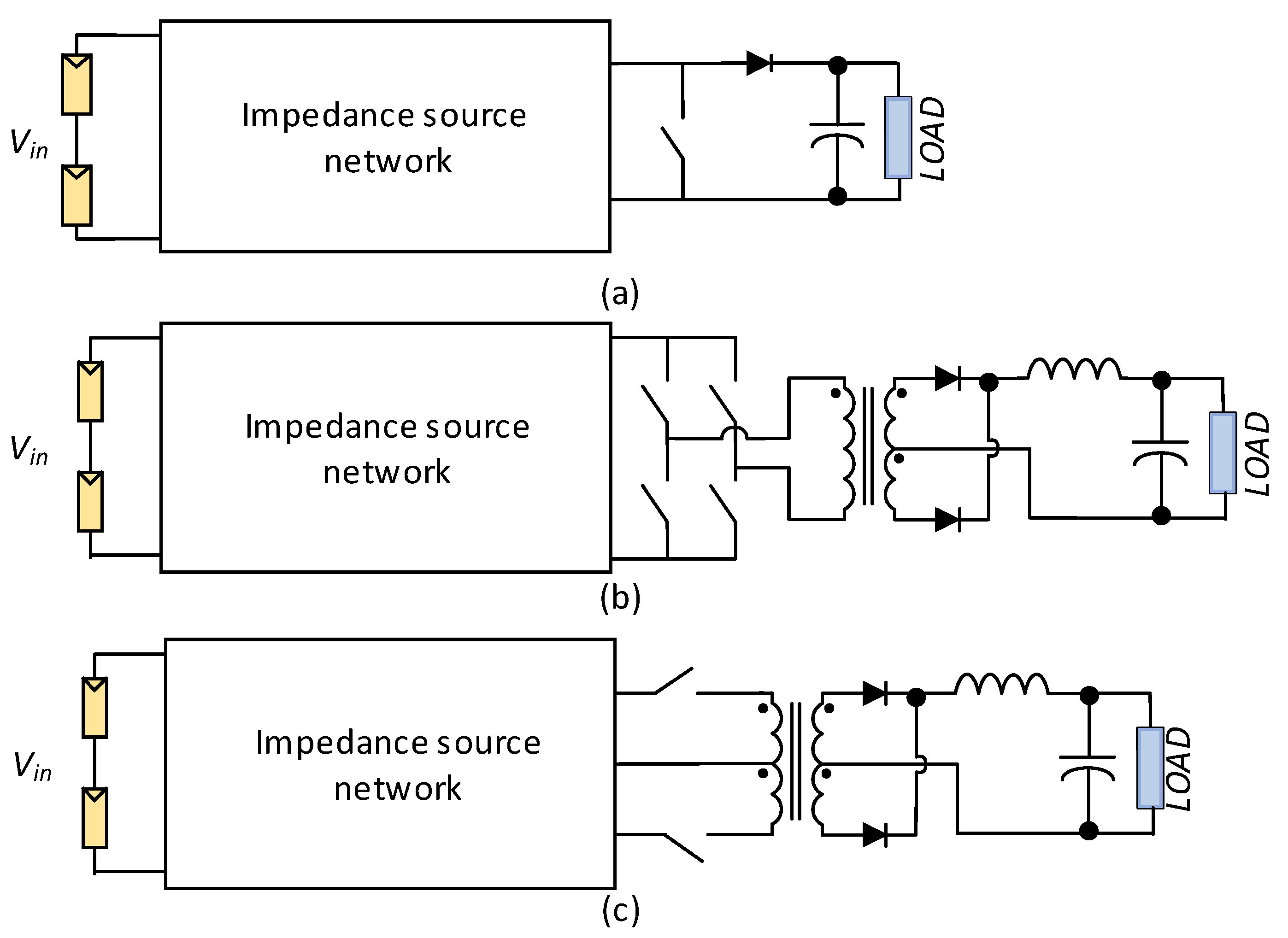
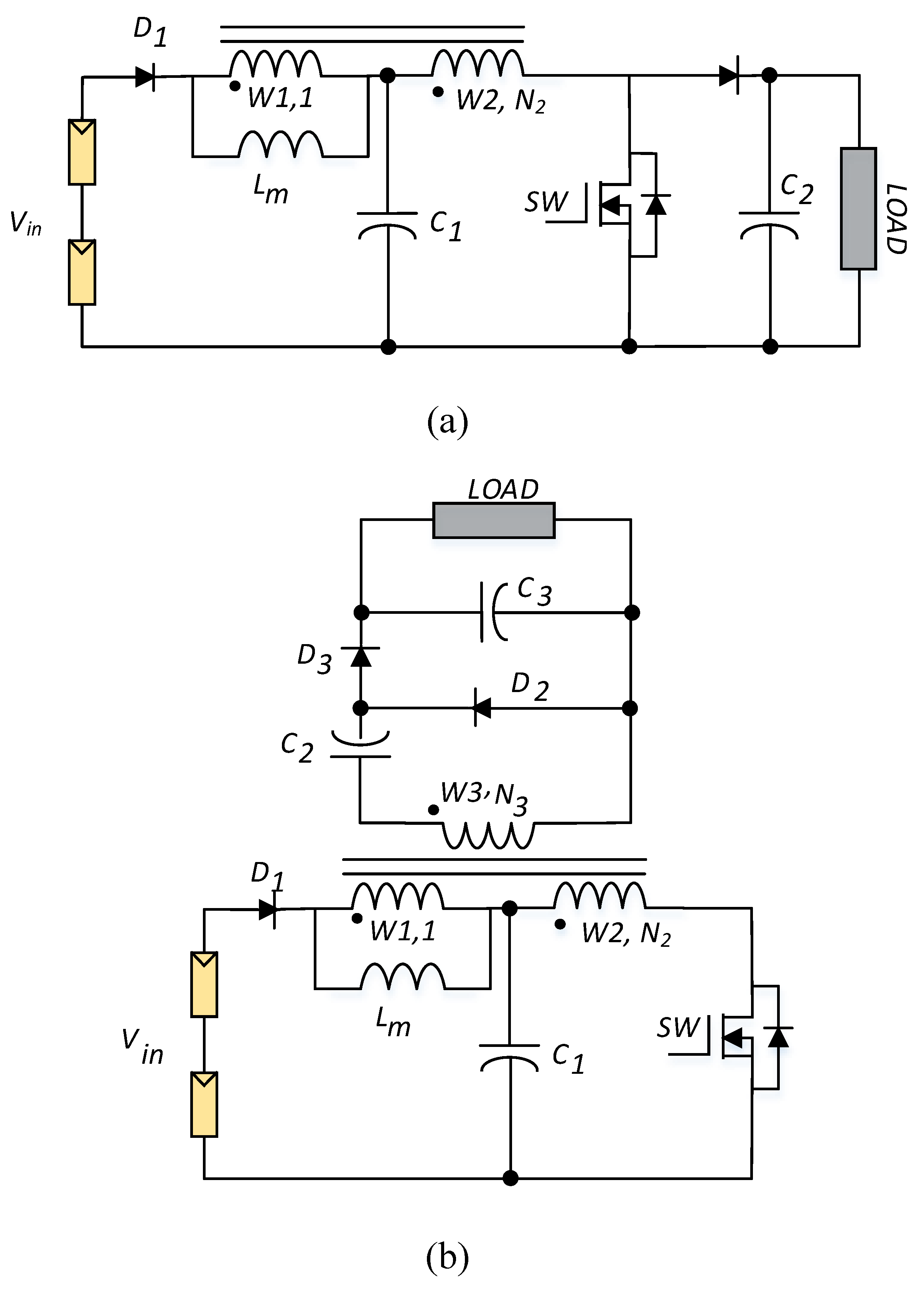
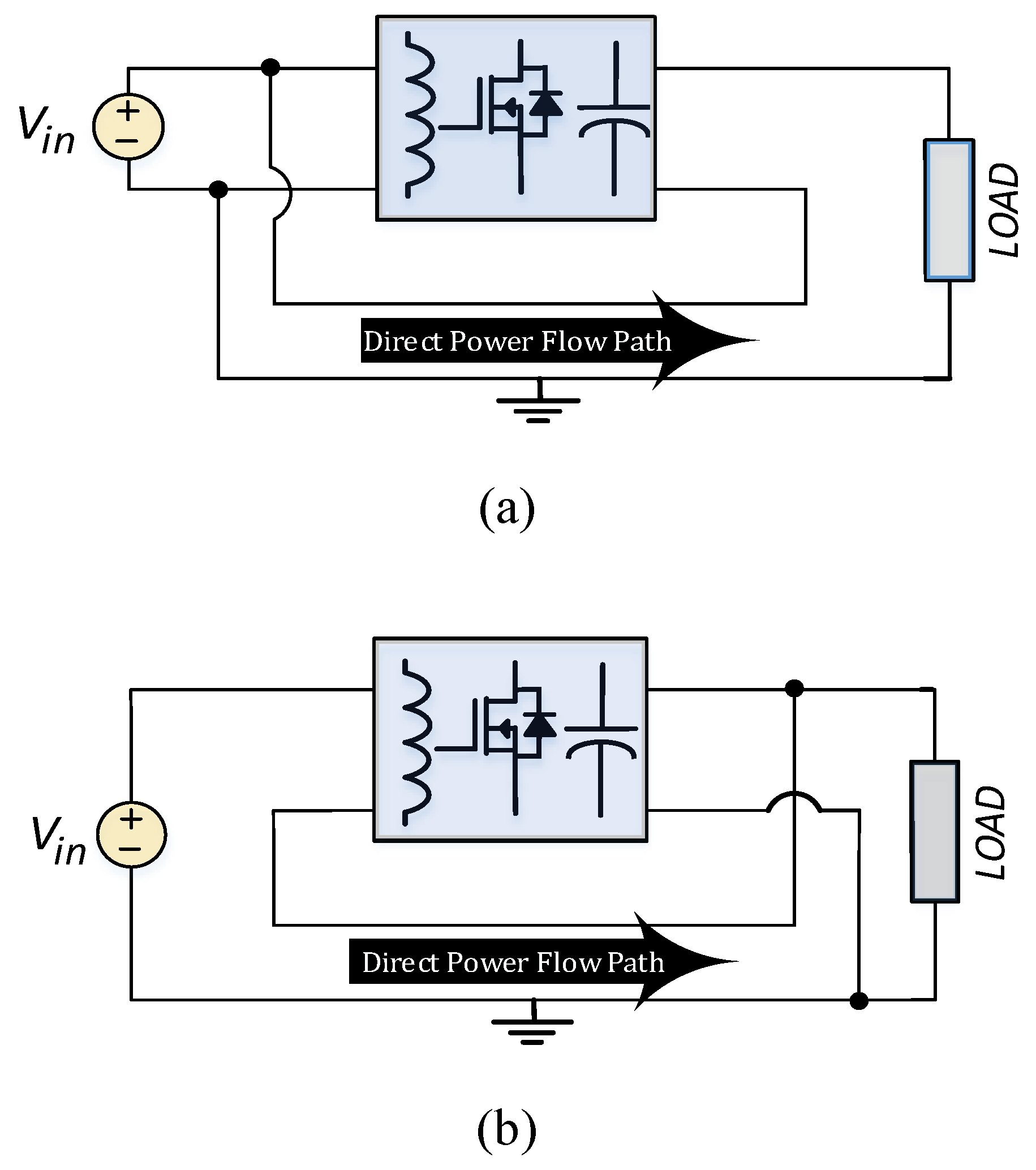
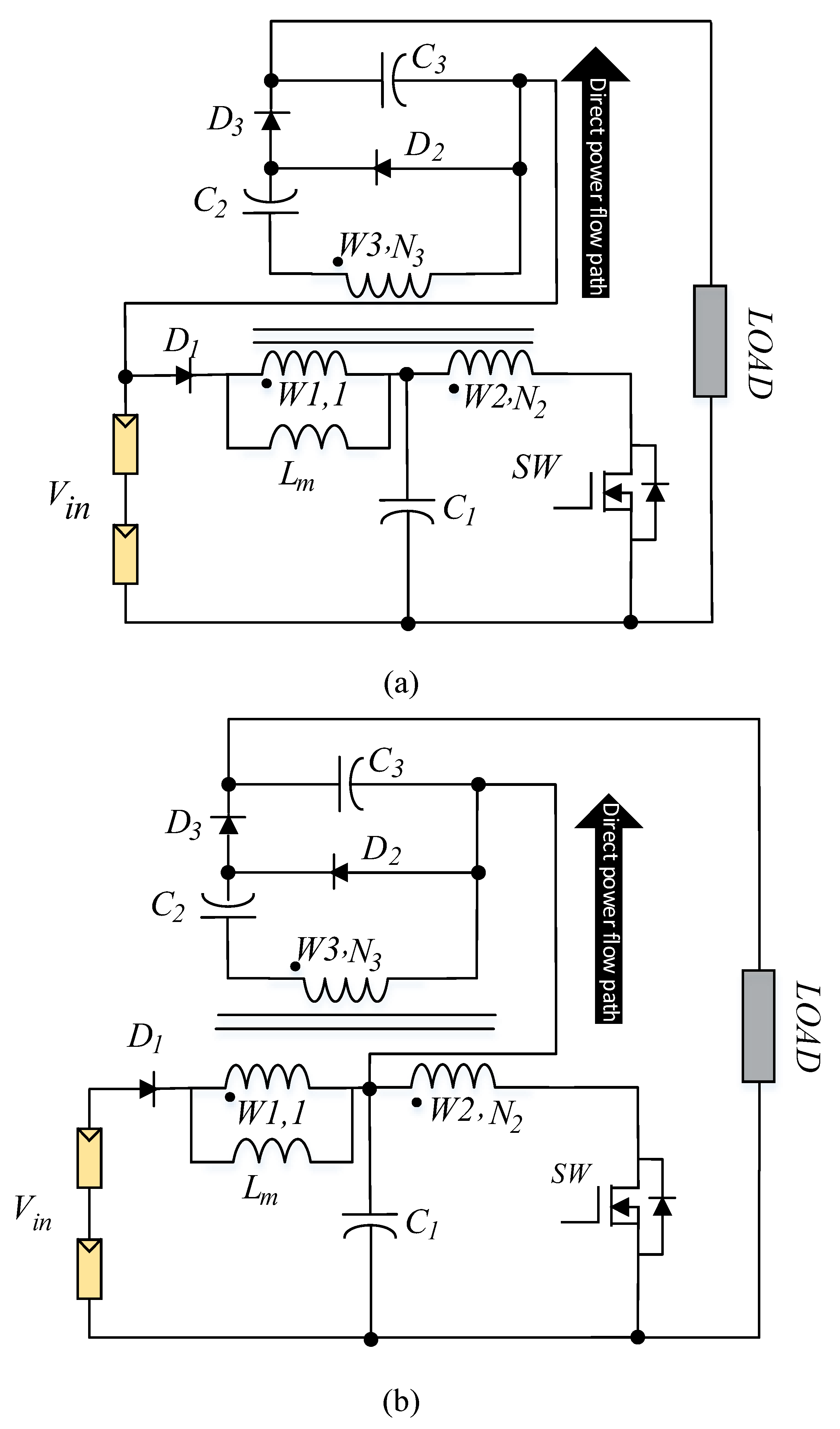


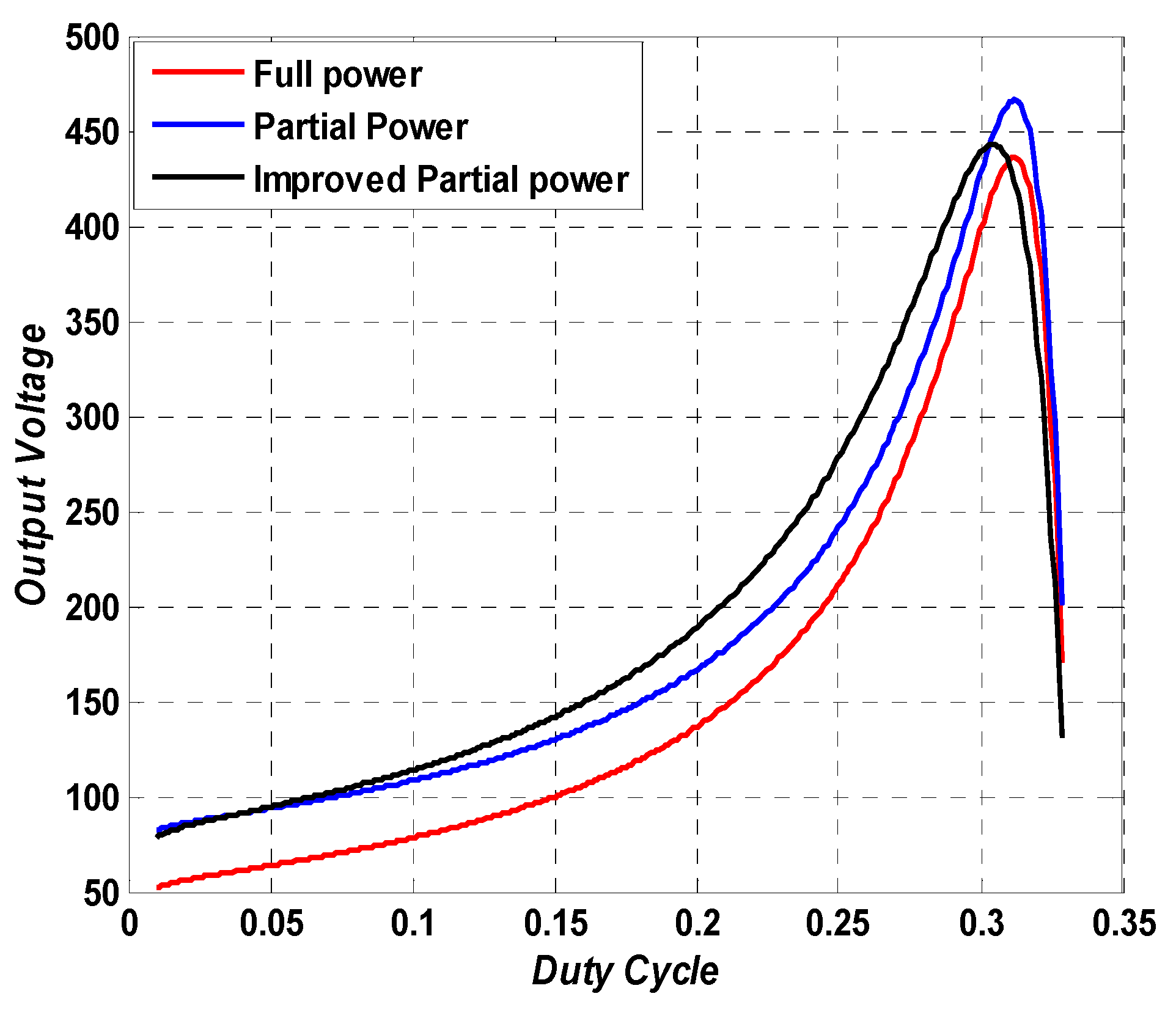
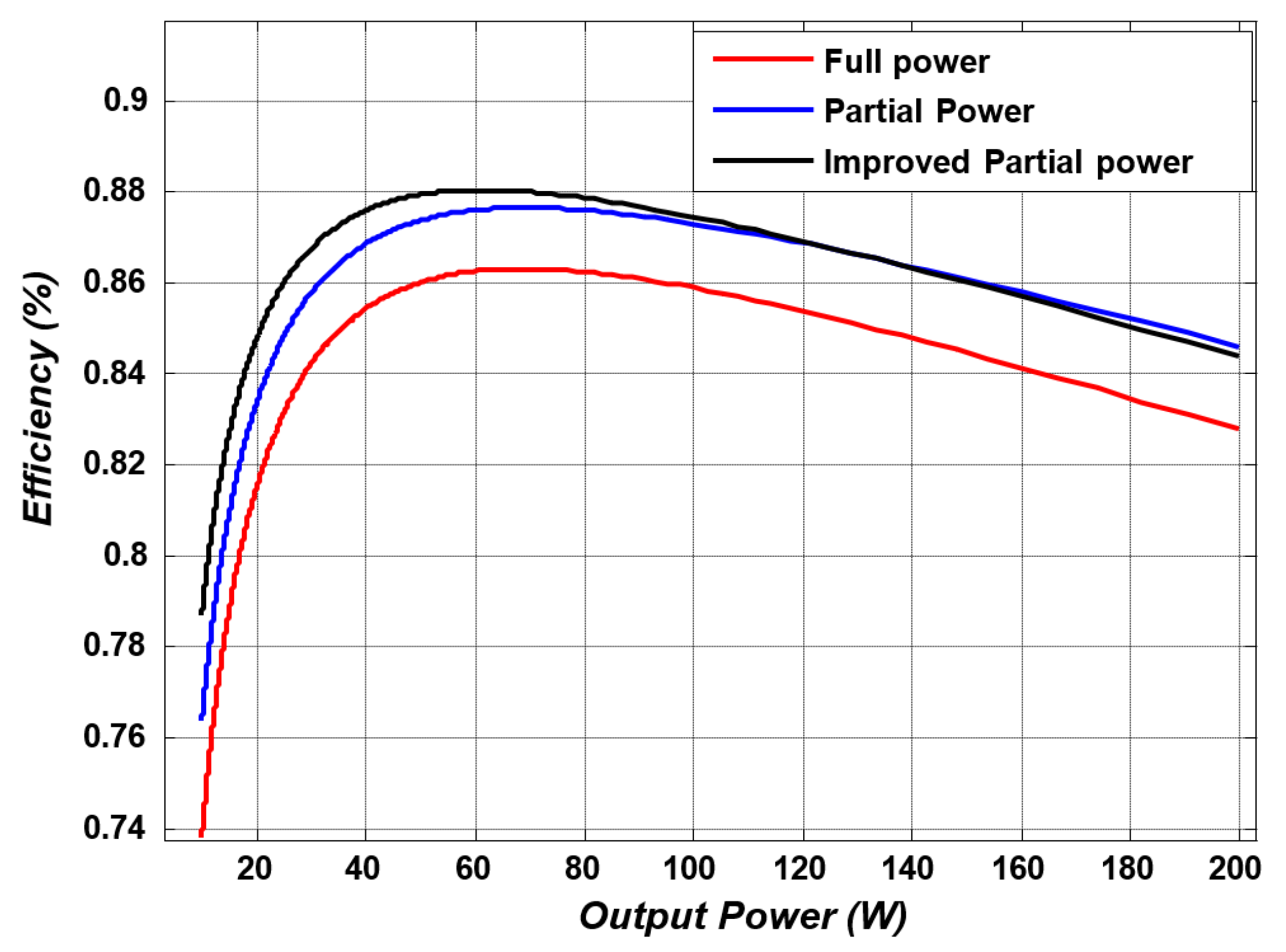

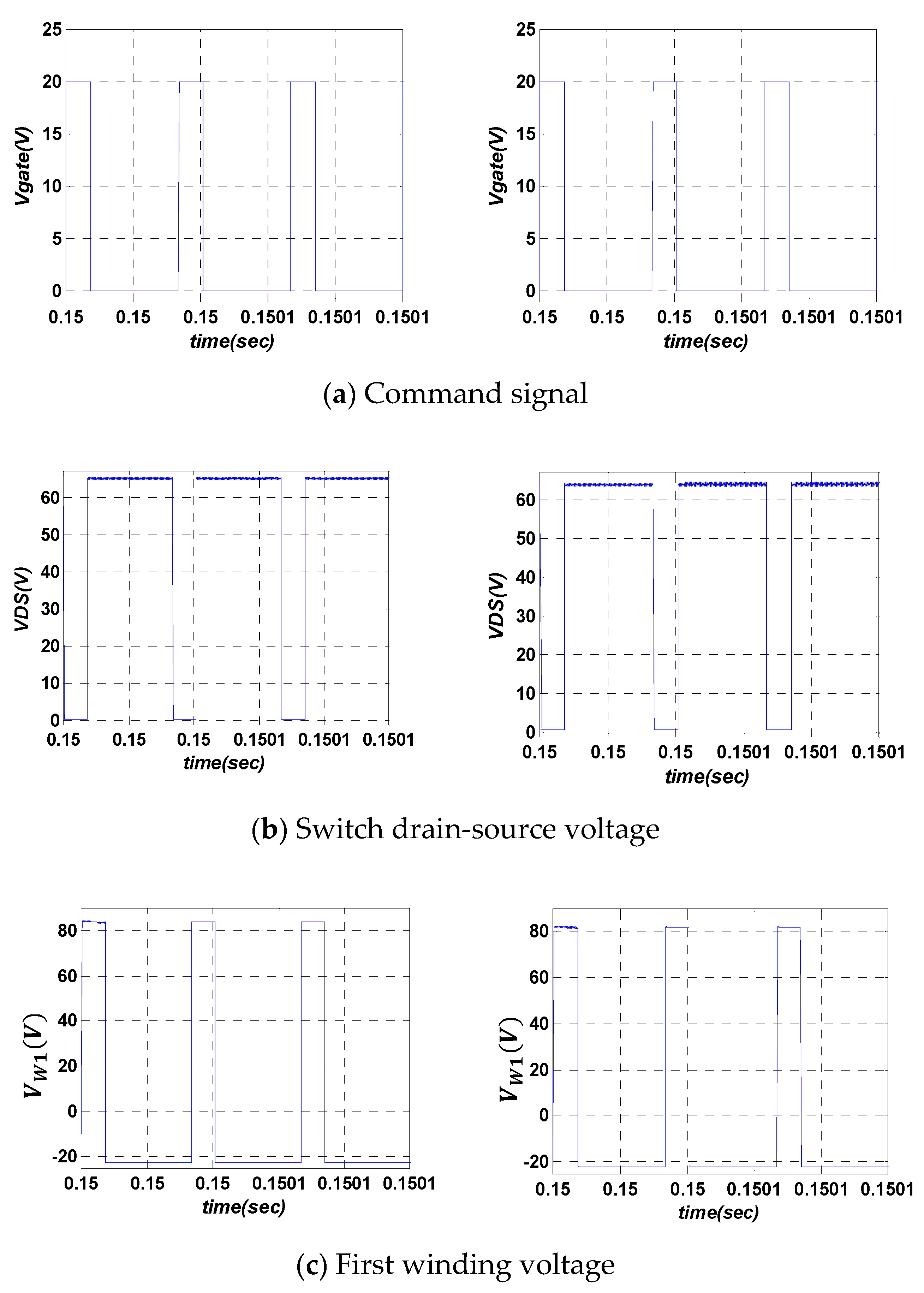
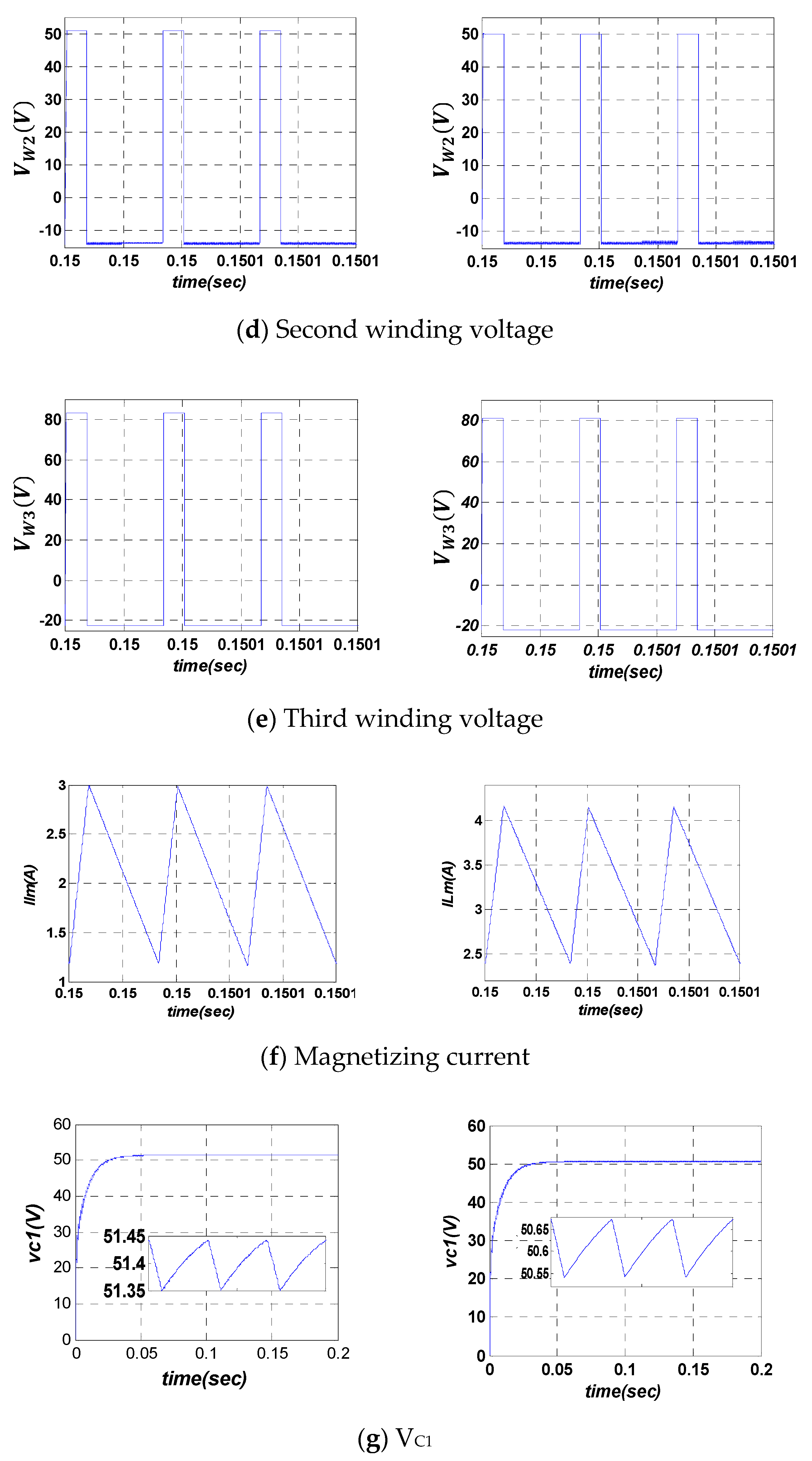

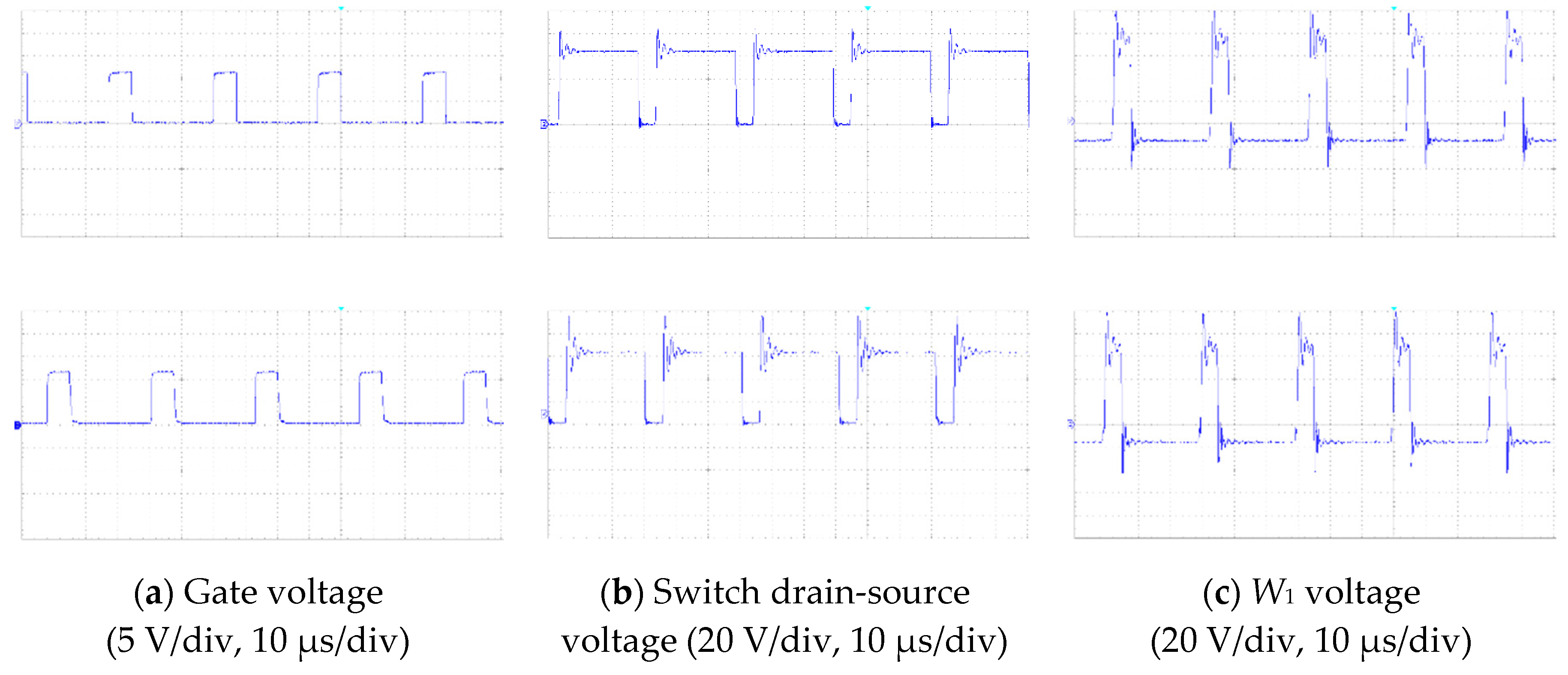

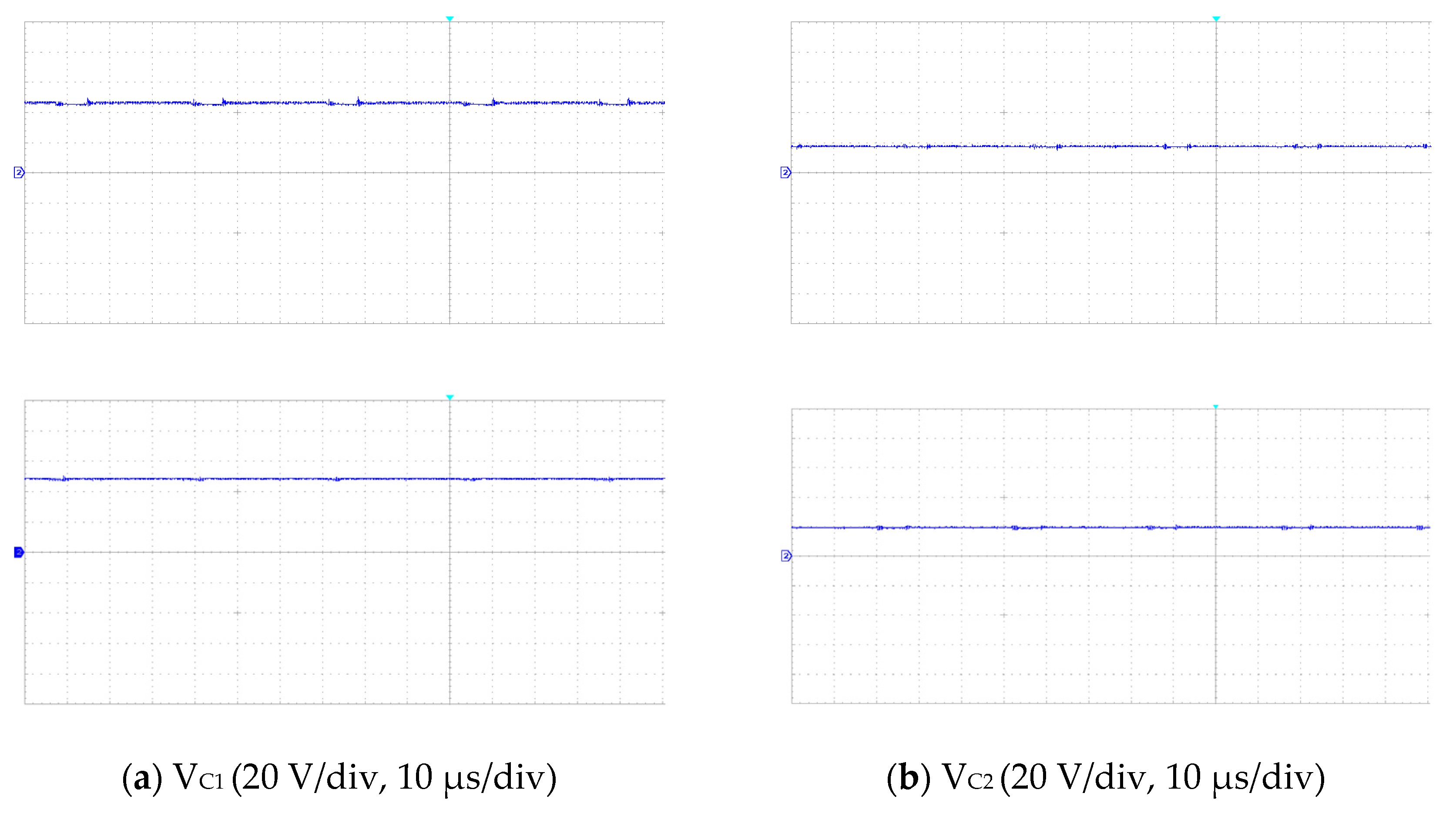
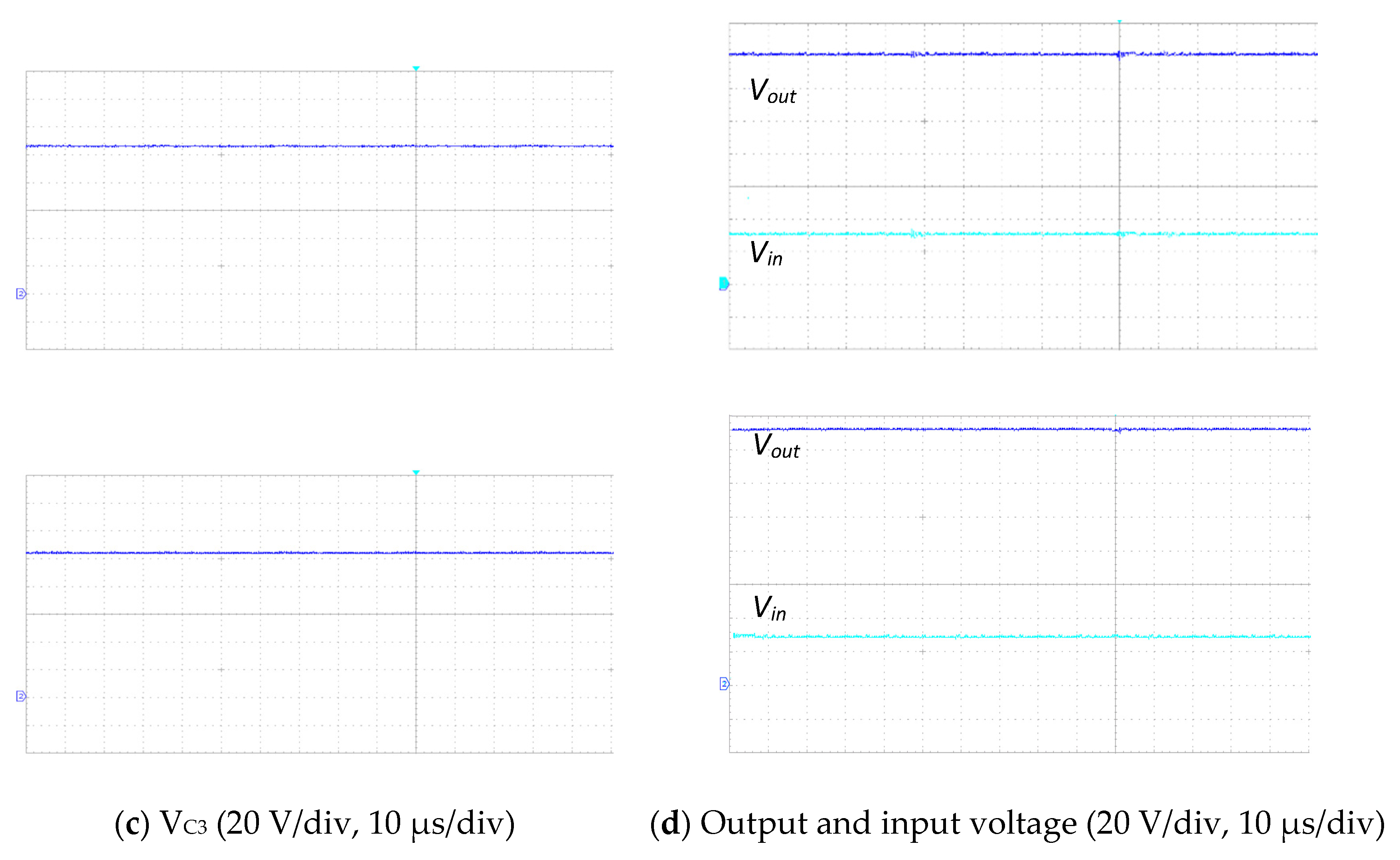
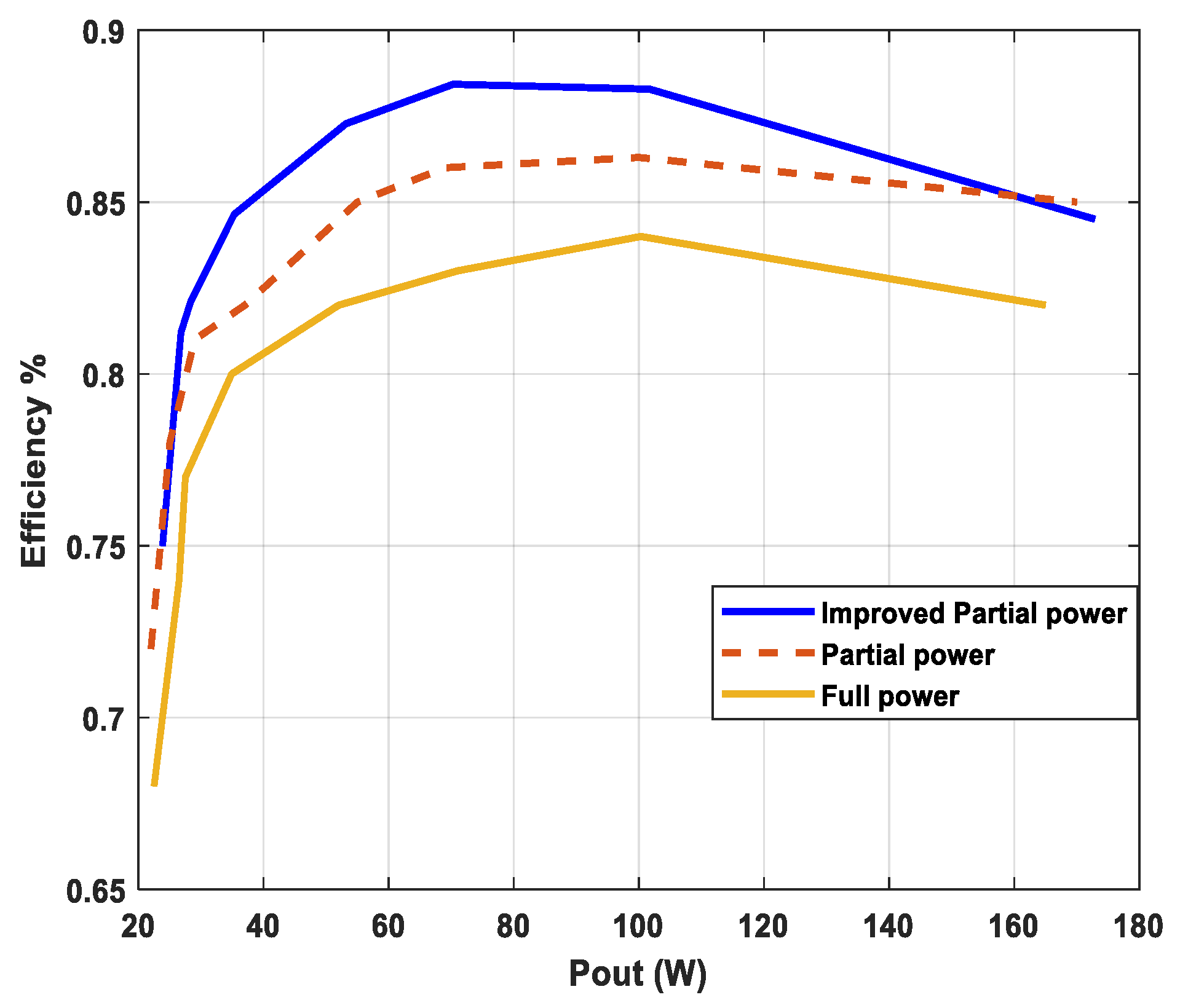
| FPTSC | Conventional PPTSC | Improved PPTSC | |
|---|---|---|---|
| Gain | |||
| Parameter | Symbol | Value |
|---|---|---|
| Input voltage | Vin | 30 V |
| Output voltage | Vout | 150 V |
| Load | R | 400 Ω |
| Switching frequency | f | 30 kHz |
| Turns ratio of three winding transformer | 1:N2:N3 | 00:06.6 |
| Magnetizing inductance | Llm | 330 µH |
| Capacitance | C1, C2, C3 | 470 µF |
| Diode forward voltage | Vf | 1.2 V |
| Conduction resistance of switch | Ron | 0.09 Ω |
| First winding resistance | R1 | 0.2 Ω |
| Second winding resistance | R2 | 0.1 Ω |
| Third winding resistance | R3 | 0.3 Ω |
Publisher’s Note: MDPI stays neutral with regard to jurisdictional claims in published maps and institutional affiliations. |
© 2020 by the authors. Licensee MDPI, Basel, Switzerland. This article is an open access article distributed under the terms and conditions of the Creative Commons Attribution (CC BY) license (http://creativecommons.org/licenses/by/4.0/).
Share and Cite
Rajaei, A.; Shahparasti, M.; Nabinejad, A.; Savaghebi, M. A High Step-Up Partial Power Processing DC/DC T-Source Converter for UPS Application. Sustainability 2020, 12, 10464. https://doi.org/10.3390/su122410464
Rajaei A, Shahparasti M, Nabinejad A, Savaghebi M. A High Step-Up Partial Power Processing DC/DC T-Source Converter for UPS Application. Sustainability. 2020; 12(24):10464. https://doi.org/10.3390/su122410464
Chicago/Turabian StyleRajaei, Amirhossein, Mahdi Shahparasti, Ali Nabinejad, and Mehdi Savaghebi. 2020. "A High Step-Up Partial Power Processing DC/DC T-Source Converter for UPS Application" Sustainability 12, no. 24: 10464. https://doi.org/10.3390/su122410464





